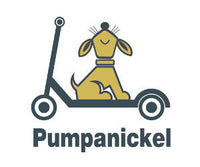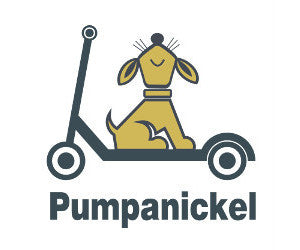
5 Tips To Stay Safe When You Ride
As with any sports, falls, scrapes and bruises are not uncommon when scooting, skating, riding or freestyling. Whilst kids and beginners are the most likely to get injured, adults and experienced riders can also get hurt. Whether you are scooting or skating, a beginner or an experienced rider, here are 5 basic tips to stay safe.
Tip 1: Wear The Right Gear
The most important safety tip is to wear the right gear. Wear the proper shoes for your sports, whether it’s sports shoes or shoes with flat soles for skateboarding, and make sure these are fastened or tied properly.
 A properly fitting buckled helmet is essential to protect your head, the most important part of the body. The Nexus helmets are designed for young kids when they are out skating, scooting or cycling. For older kids and adults who are into skateboarding, longboarding or freestyle scootering, invest in a quality helmet that is certified for your sports. For example, the Predator FR7 is CE-1078 certified as helmets for pedal cyclists and users of skateboards and roller skates while the Gain Sleeper helmet are CE/CPSC/AS/NZ certified for action sports.
A properly fitting buckled helmet is essential to protect your head, the most important part of the body. The Nexus helmets are designed for young kids when they are out skating, scooting or cycling. For older kids and adults who are into skateboarding, longboarding or freestyle scootering, invest in a quality helmet that is certified for your sports. For example, the Predator FR7 is CE-1078 certified as helmets for pedal cyclists and users of skateboards and roller skates while the Gain Sleeper helmet are CE/CPSC/AS/NZ certified for action sports.
Elbow and knee pads are useful to protect the most likely impact points and reduce the severity of any potential injuries. They absorb some of the impact from falling and protect you from cuts, scrapes and abrasion. Like helmets, any elbow or knee pads you wear should be snug without restricting your circulation.
If you are doing tricks on a stunt scooter or skateboard, hard shell elbow and knee pads such as the Fast Forward Rookie Knee-Elbow Pads Set will enable you slide out the fall. If you cycle, mountain bike or cruise long distance on a longboard, comfortable and lightweight elbow and knee pads from G-Form will protect you and make your ride more comfortable.

Helmets, elbow and knee pads are just the basic protective gear. Others include skateboard sliding gloves, padded shorts and protective suits, to name a few. Do ensure you get all the safety gear you need for your sports.
Tip 2: Check Your Ride Regularly
It is always a good idea to check your rides regularly. If you are a parent, you might want to learn more about your kid’s scooter or skateboard. Taking the time to understand the various parts of your ride will help you maintain it and minimise equipment failure when you, or your child, is using it.
If it’s a skateboard, check your board for cracks, sharp edges, damaged wheels and loose parts before you skate. Learn how to loosen or tighten your trucks when needed and make sure the wheels and hardware are secure before riding. Pay attention to all the parts of your ride to ensure they are working well before you head out. If it’s a kick scooter, for example, inspect and tighten any bolts and screws which can become loose over time with each use. Ensure brakes are working and handlebars are locked in place and not moving. Clean out the wheels and remove any debris.
Tip 3: Ride in the Right Places & Practise Proper Etiquette
Bicycles, kick scooters, skateboards and longboards are categorised as non-motorised personal mobility devices in Singapore. Use the right path and watch out for pedestrians and other users. If you are on the road, ensure you follow traffic rules.
 Images from lta.gov.sg
Images from lta.gov.sg
Slow down when you’re in crowded areas and always remember to check right and left before you make any turnings. If you are out with your family or friends, avoid hogging the lanes. Be considerate and ride in a line instead of next to each other. If you are riding at night, ensure you ride only along brightly lit areas so you can see the condition of the road.
For those riding in the skate parks, obey all the rules governing use of the park. Many skate parks have areas set aside for beginners. Stick to this area or somewhere similarly easy when you get started. Know and practice proper etiquette. If the skate park is crowded, wait your turn instead of jumping blindly into the bowl.

Parents, if your children are learning to scoot or skate, it is never too early to teach them proper etiquette and basic rules as this can help keep them safe. For example, teach them to keep to one path, be aware of and watch out for others, and to look before they turn. Weaving in and out of different lanes and stopping suddenly is dangerous, especially in crowded parks as other riders may not be able to see them and stop in time.
Tip 4: Ditch that earphones.
While you are out riding, it is important to be aware of your surroundings so you can react quickly to any situation. You also need to be considerate and aware of others as they may not always hear or see you coming.
Don’t ride with headphones as listening to music when you are riding can shut out traffic sounds and hinder your ability to know what is going on around you. If listening to music is part of the joy of a ride, then make sure you lower the volume so you can still hear what’s outside and always pay attention to your surroundings.
Tip 5: Learn to fall safely
Learning the proper falling techniques and roll can reduce your chances of injury. Rolling into and out of the fall, for instance, can save your wrists and knees some serious damage.
If you fall and stick your hands out to catch yourself, you risk injuring your palms, wrist and even breaking an arm. The right way to fall is to roll with the impact rather than stop it. By rolling with it, you distribute the force around your body and come to a slow stop instead of an abrupt one.
Conclusion
These are 5 basic tips to keep you safe when you’re riding. Check out our range of helmets and protective gear here.

